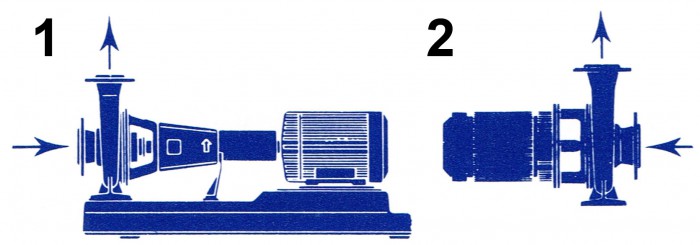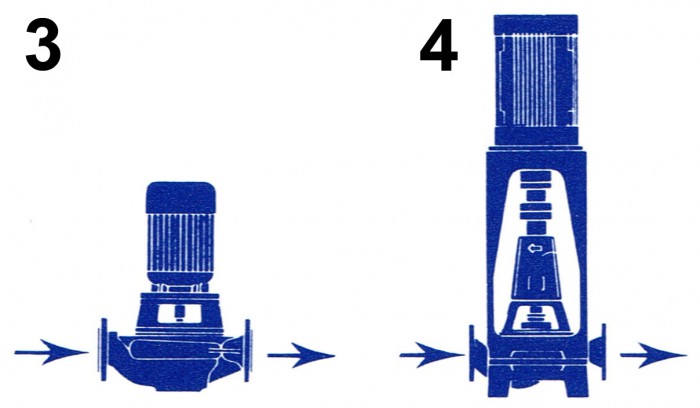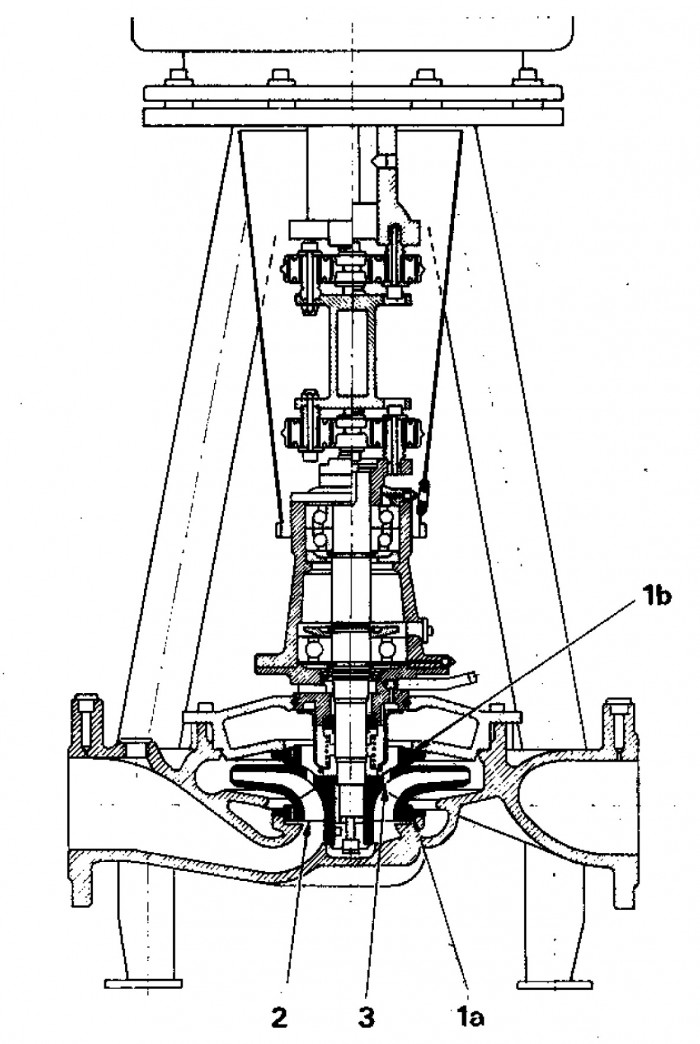3.2.1 Water pump
Water pump
A standard water pump is a pump designed to operate with pure cold water and for pure, non-corrosive liquids. There are an enormously large number of designs and types on the market, nevertheless, a classification into main categories can be made in accordance with figure 3.21a and 3.21b.

Compact pumps with the impeller mounted directly on the motor shaft end (close coupled) are suitable for volume flows up to a maximum of approximately 200 m³/h and for maximum delivery heads of approximately 80m. The motor output should not however, exceed 20-30 kW. With larger motor outputs the bearings in normal motors are, in fact, too heavily loaded and in addition the motor becomes too heavy to handle during servicing. Compact pumps can often be mounted directly in pipelines without supports, this of course assuming that the pipeline has sufficient rigidity. Normally any kind of mounting direction can be used, with the exception that the motor must not be located under the pump because of the risk of motor damage in the event of seal leakage.

Figure 3.21a and 3.21b Different designs of water pump units
- Horizontal pump with its own bearing mounted together with the motor on common base plate. Angled connections inlet and outlet.
- Horizontal compact pump with impeller mounted on the end of the motor shaft ( close coupled). Angled connections inlet and outlet.
- Vertical compact pump with impeller mounted on the end of the motor shaft (close coupled). In-line connections.
- Vertical pump with its own bearing and motor mounted on a special frame. in-line connections.
Similar ranges of in line close coupled centrifugal pumps are covered by ISO 2858, ISO 5199 and ISO9908. See Section on Pump Standards for more information. Somewhat larger pumps use their own bearings for the pump rotor with the motor preferably placed, so that the pump can be disassembled to replace the shaft seal with out too much work figure 3.22. The pump’s internal leakage (slip) naturally affects its efficiency. Using replaceable wear rings in the pump casing can restore the sealing clearances to factory new condition. Double suction pumps with one or two pump stages (see section Double suction pumps) are normally used for very large water pumps, for example, clean water pumps for larger water works.
Materials for water pumps are normally stated in the data sheet. If the materials are selected by the purchaser but the pump manufacturer or supplier considers other materials to be more suitable, these should be offered as alternatives by the manufacturer/supplier according to the operating conditions specified on the data sheet. Chemical composition, mechanical properties, heat treatment and welding procedures shall be in accordance with the relevant material standards. When tests and certificates for the above-mentioned properties are required, the procedures shall be agreed between the purchaser and supplier according to the agreed standard.

1a. Wear ring front
1b. Wear ring rear
2. Impeller
3. Balancing hole for returning the leakage past the upper sealing clearance (balancing seal pressure)
The shaft seals can be stuffing boxes or mechanical seals.
